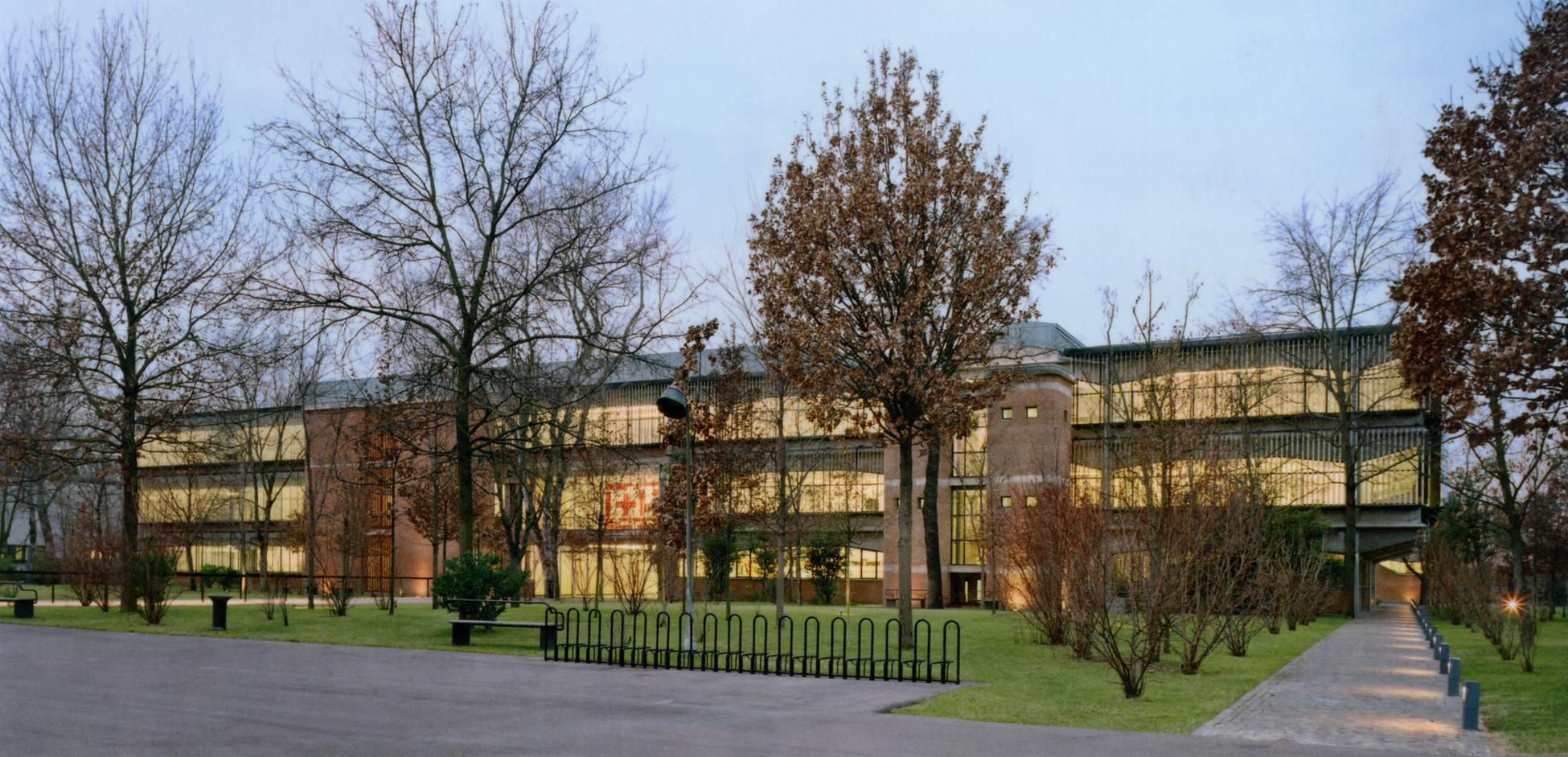The Old Building
The Max Mara Fashion House was founded in 1951, and the commission for the building at via Fratelli Cervi 66, designed to be its headquarters, was awarded to the architecture firm of Antonio Pastorini and Eugenio Salvarani in 1957. The original building was enlarged twice in the course of the next ten years by the Reggio Emilia Cooperative of Architects and Engineers. The design for the building was highly radical and broke new ground for its time, since it centered around taking maximum advantage of natural light and ventilation, and also placed all utilities outside the central structure, so as to create an extremely versatile ground-floor space.
In 2003, Max Mara moved to new headquarters on the outskirts of Reggio Emilia, having far outgrown its former home. It was then decided that the original building would house the collection of contemporary art acquired by the company's founder, Achille Maramotti.
The New Building
The building's conversion into an exhibition space was entrusted to the English architect Andrew Hapgood. His approach to the project demonstrated a complete respect for the building's past. Hapgood preserved its crude simplicity and adhered to the logic of the original project, which saw it as a highly adaptable structure that could serve a number of purposes, and shift configuration as changing needs demanded.
The conversion is typified by three new and salient interventions. The first and most essential intervention modified the perception of the building within its urban context: the orientation of its main entrance was shifted, as part of a general reassessment of the fundamentally industrial character of its architecture. The creation of a new line of sight running parallel to via Fratelli Cervi now furnishes the building with ample entrance spaces that open back through its east and west facades and lead the visitor forward into the gallery spaces. The reception hall, the spaces for temporary exhibitions, the library, and the offices are located on the ground floor.
Two new volumes have also been created in the building’s interior, as conduits that allow the flow of natural light down to the ground floor. A three-storey space was constructed as well, directly above the main entrance and stands at the center of the permanent collection; one returns to this space any number of times while visiting the Collection. This space, like the two-storey space for large-scale paintings, is lit by three linear skylights hidden above the primary structure in cast concrete. Sunlight is distributed by way of reflectors within their vertical shafts, and thus allows the building’s interior to remain in touch with the surrounding outside spaces and the changing qualities of their natural light.
The permanent collection is housed in the first and second floors of the building. Daylight floods the galleries through the building’s original glass facade, but overall illumination and levels of exposure to sunlight are controlled by the solar roof, first installed in the Seventies and now restructured.
The landscape setting adheres to the principles that guided the building’s renovation: its local plants and style of ornamentation reinforce the notion of the site’s recuperation as a post-industrial landscape.

